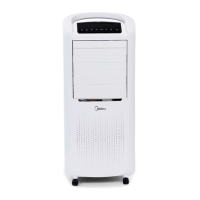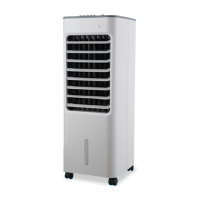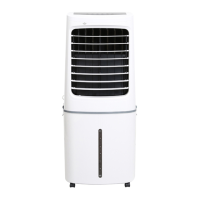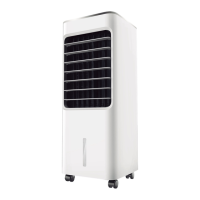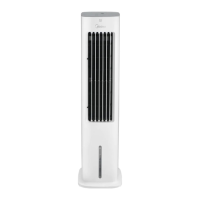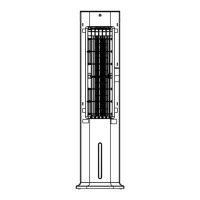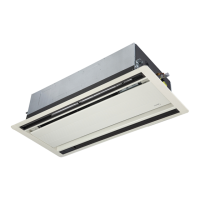Install Your Outdoor Unit
Select installation location
Before installing the outdoor unit, you must choose an appropriate location. The following are
standards that will help you choose an appropriate location for the unit.
Proper installation locations meet the following standards:
Firm and solid—the
location can support the
unit and will not vibrate.
Protected from prolonged periods
of direct sunlight or rain.
Where snowfall is anticipated, take
appropriate measures to prevent
ice buildup and coil damage.
DO NOT install unit in the following locations:
Near an obstacle that will
block air inlets and outlets.
Near a public street, crowded
areas, or where noise from
the unit will disturb others.
Near animals or plants
that will be harmed
by hot air discharge.
Near any source of
combustible gas.
In a location that is exposed to large
amounts of dust
In a location exposed to a excessive
amounts of salty air.
1
NOTE
Install the unit by following local codes and regulations , there may be dier slightly between
dierent regions.
NOTE
: PRIOR TO INSTALLATION
60cm(24")
above
60cm(24")
on right
200cm(79")
in front
30cm(12")
on left
30cm(12")
from back wall
Good air circulation
and ventilation.
Meets all spatial requirements shown in Installation
Space Requirements above.
Noise from the unit
will not disturb other
people.
Long-term
Strong
wind
Strong
wind
Strong
wind
Wind Baffle
If the unit is frequently exposed to heavy rain or snow:
Build a shelter above the unit to protect it from the rain or snow. Be careful not to obstruct air flow
around the unit.
If the unit is frequently exposed to salty air(seaside):
Use outdoor unit that is specially designed to resist corrosion.
90° angle to the
direction of the wind
Build a wind Bae
to protect the unit
Build a shelter
to protect the unit
If the unit is exposed to heavy wind:
Install unit so that air outlet fan is at a 90° angle to the direction of the wind. If needed, build a barrier
in front of the unit to protect it from extremely heavy winds. See Figures below.
CAUTION:
SPECIAL CONSIDERATIONS FOR EXTREME WEATHER
Shelter
20

